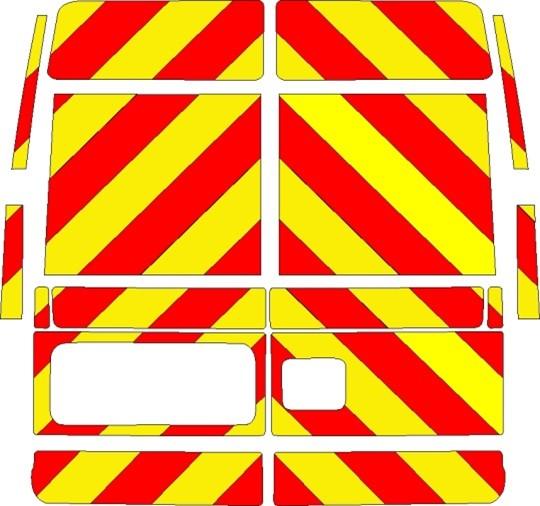We use cookies to make your experience better. To comply with the new e-Privacy directive, we need to ask for your consent to set the cookies. Learn more.
Confused about Chapter 8 Chevron Requirements?
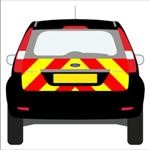

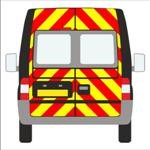
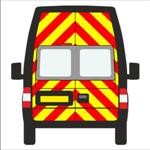
The compulsory requirements for Chapter 8 Chevron Markings are somewhat vague whichever website you may look on, this allows room for a large range of materials to be used.
With this in mind, we have put together this blog to try and simplify this area of confusion.
The basic principle of Chapter 8 is all about the duty of care by Managers protecting their workers and staff that need to stop and work on high-speed roads and motorways (failure to do so may result in legal action should an accident occur involving your fleet). It does also recommend the same specification be used for works vehicles on all types of roads irrespective of the speed limit. This is a requirement as standard by the Highways Agency for all contractors.
What materials can be used?
Red Reflective part of the Chapter 8 chevron markings
Some Product Identification


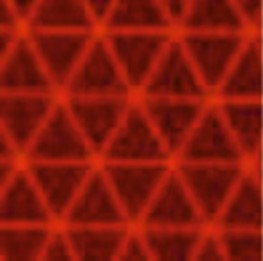
Aura 191 Oralite VC170 Oralite VC 612
There are two types of reflective films available for Chevron Kits:
Prismatic Type or Class RA2
Glass Bead Type. Class RA1
The prismatic type is highly recommended for the manufacture of chevron kits as it is substantially more reflective than Class RA1 glass bead reflective allowing maximum visibility from greater distances. This in turn gives the upmost protection to workers stopping on roads and highways.
These films should be compliant with EN12899-1, RA1/ RA2, or an equivalent micro-prismatic so it may be an idea to check with your supplier first.
The microprismatic films we have available are as follows:
Aura 191
Oralite VC 170
Oralite VC 612
Oralite VC 412 RA
The glass bead type Class RA1 (commonly known as Engineering Grade) can be used instead of microprismatic material to meet minimum retro-reflective requirements for low-speed roads (under 40 mph limit) but are not acceptable for vehicles operating on Highways Agency/ Chapter 8 contracts.
Fluorescent yellow (non-reflective) part of the Chapter 8 chevron markings
It is recommended that a non-reflective fluorescent yellow material be used which provides high visibility under all daylight conditions. We recommend the use of a 3yr durable fluorescent film.
The fluorescent films we have available are as follows:
Oralite 7510 3yr Fluorescent Yellow
Oralite 7510 Rapid Air 3yr Fluorescent Yellow (Bubble-free adhesive)
Description for chevron markings (as per REMA guidelines)
The rear markings for cars and vans are upward-facing chevrons in red and yellow alternating stripes, as shown in the diagram below.
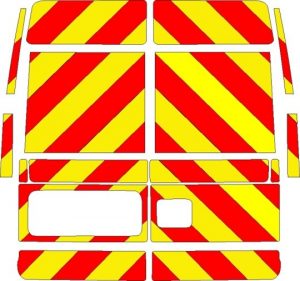
Each chevron stripe should be no less than 150mm in width (larger on big vehicles), angled upwards between 45 and 60 degrees. The red stripes must be of retro-reflective material, designed to maximise night-time visibility, whilst the yellow stripes are non-reflective, providing good daytime visibility and contrast to the red. The chevrons should cover as much of the rear as possible without obscuring windows, lights, or registration plates. Note that it is also legally acceptable to have complete coverage of red retro-reflective material in place of chevrons on the rear but the red/yellow combination is generally considered to give the greater all-round conspicuity.
In addition to the above guidelines, highway maintenance vehicles will need “HIGHWAY MAINTENANCE” text across the rear of the vehicle at a minimum of 70mm in height. The same applies to motorway maintenance vehicles. It is also recommended that a 50mm fluorescent yellow retro-reflective strip be fitted along each side of the vehicle and red reflective strips should be applied to all rear facing edges of open doors and guard rails.
If you need advice about chevron markings for escort vehicles of Abnormal loads please note that this is slightly different from Chapter 8 markings. See below for the relevant link.
Additional Information
If you think we have made a mistake or have any additional information which may be helpful please feel free to share your comments with us.
Please note: These guidelines are compiled from various sources and produced for advisory purposes only. They are intended to clarify the official legislation available. This information is given in good faith but without liability and should not be taken as legal advice.

